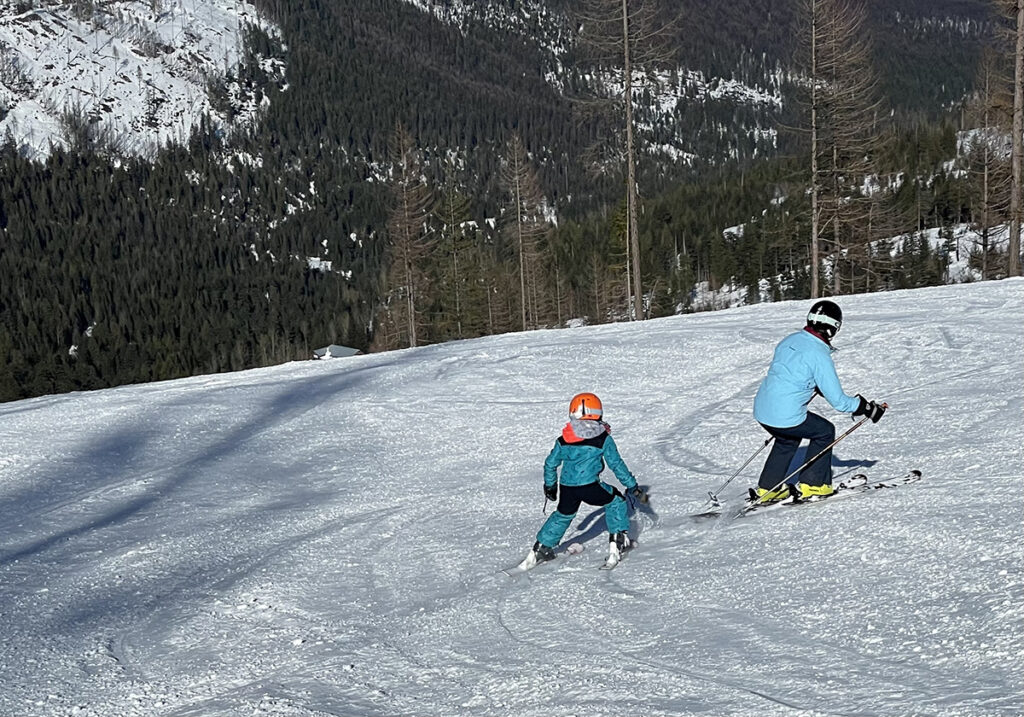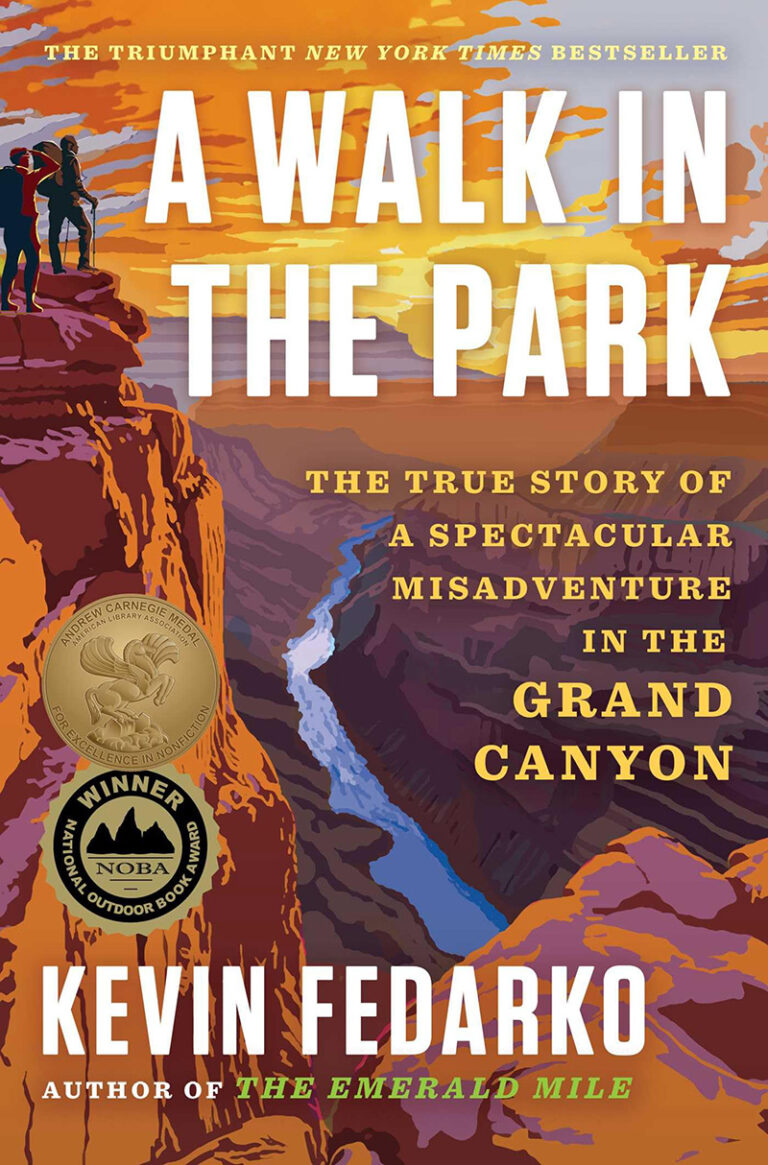These bits of advice from an experienced instructor will help kids and parents build their skills together this winter.
Sponsored by Ski the Northwest Rockies Association
I have taught skiing and snowboarding for over a decade now. Writing that makes me feel a bit old considering I didn’t start teaching until my 30s. Over those years, I have found myself repeating some of the same bits of one-liner instructions to students young and old for a reason—they will help anyone at any age become a better skier or snowboarder!
Look where you want to go! If you look down at your feet, you will end up there. If you look across the slope, down the slope, or through a turn—you will get there. Your eyes and brain work really well to get your body to where you want it even if you haven’t mastered your turns. Remember this in the trees and in crowds: look between the obstacles.
Drive with your legs! Your lower body is where you want to focus when learning. Ski poles help time and engage turns, but that comes after learning to drive your skis. Rely on poles to keep you upright or for stopping and you will generally end up on the ground. This is true on snowboard too (not the pole part). Learn to drive the board with your knees and hips, not your shoulders or those swimming arms.
Lean downhill! On skis, press those toes in your boots and square your shoulders down the slope. On a board, think of your front knee and hip as your steering wheel. It is a little scary at first to lean downhill, but you will have much more control and spend less time on your butt.

Get out more! Taking one or two lessons a year is a good start, but to really let those lessons sink in and build that muscle memory, go more and practice. A lot of drills and techniques can come at students during a lesson. Take one or two of those and go out to practice yourself or with your child in between lessons.
Find others to help push limits. It’s a delicate balance to get out with people who will push you or your child without pushing too far out of that comfort zone. Trying to match someone’s turn or speed can help you know how to engage more difficult terrain or hit that next jump.
Get out of a rut. We all have our favorite conditions; it could be a foot of powder, perfectly groomed corduroy or the same comfortable run over and over. To improve your riding, mix it up and get into snow or on runs that are a little bit unfamiliar or challenging. This will improve balance and response and will also help the body react to something new and make it familiar.
Be playful! Skiing and boarding are supposed to be fun. Try new tricks. Ski one legged. Both of these will improve balance and edge awareness. It’s so easy to get frustrated when learning something new. Did you learn to ride a bike the first time? Wipe the snow out of those goggles. Take a break if needed. Then get back out there.
Cover photo courtesy of Shallan Knowles













